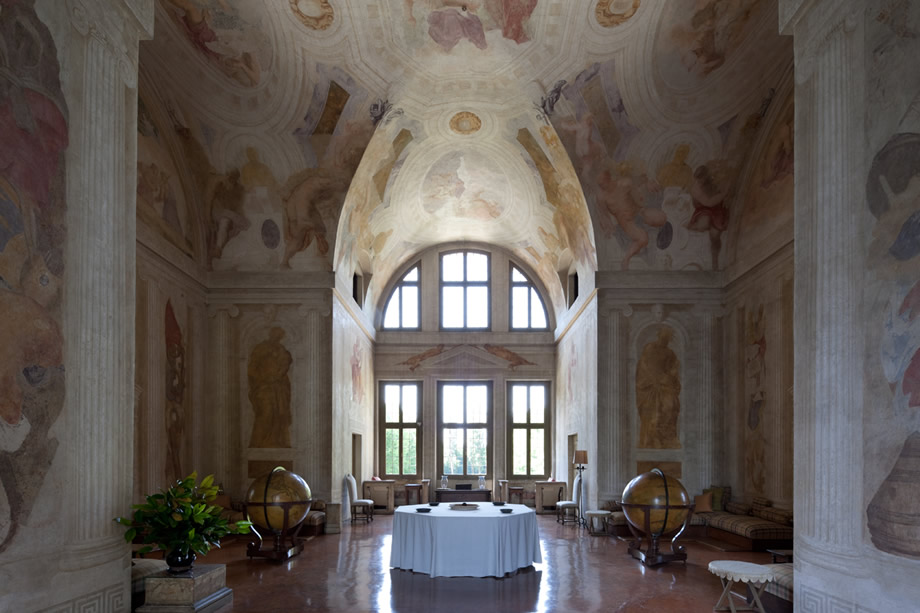FRESCOES
The fabbrica built by Andrea Palladio on the banks of the Brenta River is decorated, on the piano nobile, by a pictorial cycle that covers all the ceilings and walls of each room.
Battista Franco (1510ca-1561) - a Venetian artist who studied in Rome during the cultural influence of Michelangelo – was among the first who began to paint, but then passed away leaving his work incomplete. By his side and also to continue the work after Franco’s death, was Battista Zelotti, a partner of Paolo Veronese, who challenged himself in the execution of the great pictorial cycle. Also present was Bernardino India (1528-1590), who painted the smaller rooms decorating in “grotesque” style, a popular style of those years, discovered in the archeological excavations under the Roman grounds.
The decoration of the walls of the salone is regulated by an architectonic partition that respects the compositional logic of Palladian architecture. Above the doorways are the Arts and Virtues represented in feminine figures of particular beauty.
Even the great lunettes that rise above the walls in the main sala, on the heads of the cross vaults, depict the mythological theme of Ovid (the story of how Jupiter and Mercury came to Earth and the moment of their important meeting with Filemone and Bauci).
The ceiling illustrates the myth of Astrea, the divine virgin who wanted to remain on Earth when all the other divinities had returned to Olympus, but then she rejoined them in the end when on Earth human behavior became corrupted and Evil prevailed over Good.
The stanze grandi of the house are decorated in the center of their ceilings by the figurations of Prometheus who stole fire from the Gods to bring it to Man (the room to the east) and of Aurora who rides on a carriage pulled by the Hours (the room to the west).
On the walls and on the ceiling of the stanza quadra to the east, are depicted scenes of the Fall of the Giants (a motif that Giulio Romano had first painted in the square room of Palazzo Te in Mantova).
The decoration of the stanza quadra to the west is regulated by an illusionary gazebo that supports plants full of grapevines. On the backgrounds of the gazebo are depicted a pagan scene and a concert, as if they were events that take place indoors, on the ceiling, the figures of Bacco and Arianna appear.
The decoration of the small rooms are inspired by themes of Time and Fame, represented by a white-haired old man and a nude young woman who plays contemporarily two trumpets, one gold and one silver.
In the small lunettes of these camerini are depicted imaginary Veneto landscapes.
It is probable that the iconographic choices of this decorative cycle were inspired – if not purposely arranged - by one of Palladio’s two clients, Alvise, who was for several years a conservator of the Academia degli Uniti.

 Noboru Inoue, A+U
Noboru Inoue, A+U
 Noboru Inoue, A+U
Noboru Inoue, A+U
 Noboru Inoue, A+U
Noboru Inoue, A+U
 Noboru Inoue, A+U
Noboru Inoue, A+U

